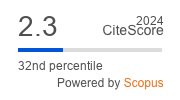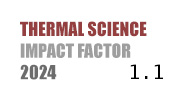THERMAL SCIENCE
International Scientific Journal
Authors of this Paper
External Links
NUMERICAL INVESTIGATION ON COOLING RATE IN PROTON EXCHANGE MEMBRANE FUEL CELL USING PROPYLENE GLYCOL FLUID
ABSTRACT
In this study, a cooling channel was constructed inside the fuel cell to examine the impact of cooling on proton exchange membrane fuel cell performance. The performance of the fuel cell was assessed using four different coolant mixtures: DI100 (100% deionized water – DI), PG10 (90% DI water + 10% propylene glycol), PG20 (80% DI water + 20% propylene glycol), and PG30 (70% DI water + 30% propylene glycol). The efficiency of the fuel cell, system temperature, operating parameters, coolant, and cooling channel shape of the fuel cell were tested using a CFD model based on the finite volume approach. The test results showed that the fuel cell performance was good for both single-cell fuel cells and fuel cell stacks at temperatures of 354 K and 360 K, respectively. However, as the membrane became dehydrated above 362 K for single cell fuel cells and after 371 K for fuel cell stacks, performance of the fuel cell decreased and no appreciable improvement was seen. For single cells, the fuel cell showed good performance improvement at PG30 combinations, whereas the best performance in stacks was attained at PG20 combinations.
KEYWORDS
PAPER SUBMITTED: 2022-04-29
PAPER REVISED: 2022-11-10
PAPER ACCEPTED: 2022-12-17
PUBLISHED ONLINE: 2023-03-11
DOI REFERENCE: https://doi.org/10.2298/TSCI220429040S
CITATION EXPORT: view in browser or download as text file
2025 Society of Thermal Engineers of Serbia. Published by the Vinča Institute of Nuclear Sciences, National Institute of the Republic of Serbia, Belgrade, Serbia. This article is an open access article distributed under the terms and conditions of the Creative Commons Attribution-NonCommercial-NoDerivs 4.0 International licence

